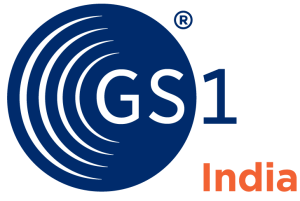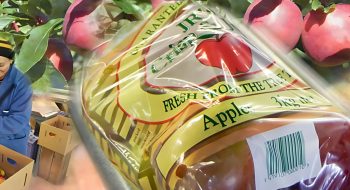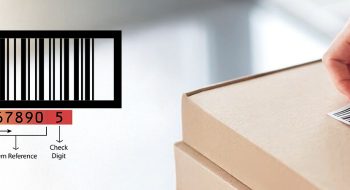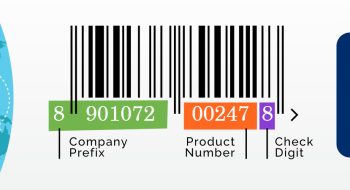European Article Numbering Code (EAN) is a series of numbers in a unique order that helps identify specific products and is used to list products for retail businesses.
An EAN-13 barcode (originally European Article Number), but now renamed GTIN (Global Trade Item Number) even though the abbreviation EAN has been still used by retailers) is a 13-digit (12 data and 1 check) barcoding standard. The EAN-13 barcode is used worldwide for marking products often sold at retail points of sale. The numbers encoded in EAN-13 barcodes are product identification numbers.
What is GTIN (EAN)?
GTIN (Global Trade Item Number) is a system developed by the GS1 and is an internationally recognized system for identifying products. It is a blanket term to describe various GS1 numbering codes – UPC and EAN. It is, hence, safe to term an EAN-13 code as a GTIN-13. GTIN provides the global supply chain solution for the identification of any item that is traded (priced, ordered, and invoiced).
Types of GTIN
GTIN includes four types of codes:
UPC-12
The twelve-digit code that North America uses.
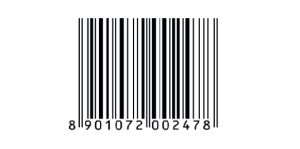
EAN-8
The eight-digit code used on smaller retail trade items.

EAN-13
The thirteen-digit code for all other countries.
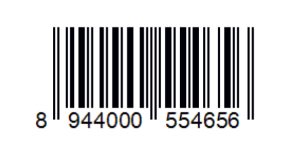
GTIN-14
The fourteen-digit number used on general distribution trade items, not intended to be sold at the Point-of-Sale.
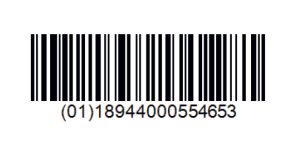
To create a GTIN, a company needs to be in possession of a GS1 company prefix. The assigned company prefix forms the base for the creation of all GS1 identifiers like GLN, GTIN, and SSCC numbers.
Why EAN-13 Barcode?
The advent of the EAN-13 barcode is a data structure stepping-stone toward supply chain control. It is used in global trade to distinguish product type, specification, etc. In other words, it helps the product be uniquely identified. It is a numeric-only barcode system used for the identification of retail products. Unique numbers are allocated to each separate retail product, not just by product brand but by unique numbers. This assists in positing the products with retailers and e-commerce companies. It facilitates a future where intelligent workflows will fuel data-driven smart supply chains.
The future smarter supply chains continue to not just embrace automation with the help of the EAN -13 barcode, but also use AI to make processes more efficient, responsive, and adaptive. Most importantly the visibility and traceability solutions in the supply chain have gained momentum, these are the “twin engines of a sustainable” supply chain.
The EAN-13 barcode has withstood the test of time because it continues to serve a key role in the evolving digital future of retail where the product is identified uniquely and the data it captures will shape decisions affecting customers and retailers.
Components of an EAN-13 Barcode Number
The first three digits of the EAN-13 serve as the GS1 Prefix. The GS1 prefix usually identifies the GS1 Member Organization which the manufacturer has joined.
The Manufacturer Code is a unique code assigned to each manufacturer by the numbering authority and all products made by a certain company use the same manufacturer code. The product code is a unique code assigned solely by the manufacturer.
The check digit is the last number used to confirm if a barcode was scanned correctly. This additional number is mathematically determined through an algebraic equation to create a check sum.
Barcodes Revolutionising the World
Barcode is worldwide used; its popularity can be attested by its use in all parts of our life. A barcode reader is an optical machine-readable representation of data relating to the object to which it is attached.
The EAN-13 barcodes are used worldwide for marking products often sold at retail points of sale. The numbers encoded in EAN-13 barcodes are product identification numbers. All the numbers encoded in UPC and EAN barcodes are known as Global Trade Item Numbers (GTIN), and they can be encoded in other GS1 barcodes.
EAN-13 is popular, recognizable, and useful for general day-to-day retail transactions since it can be read by any barcode reader. The check number also helps ensure accuracy when entering the code by hand. It combines numbers together mathematically in a certain way to get a specific, one-digit outcome. If the check digit does not match that outcome, then the code has been entered incorrectly.
Additional Benefits of GTIN
Barcode numbers play a crucial role in supply chains, including selling products over the counter and listing them on e-commerce websites. Various national and international regulatory bodies have endorsed the use of GS1 barcodes on products. The use of GS1 barcode numbers (GTINs) helps you in complying with various requirements, including those of the Ministry of Consumer Affairs, DGFT, US FDA, Ministry of Health & Family Welfare, Delhi Excise EU Regulations on UDI, and more. GS1 barcode numbers on your products enable you to list your products faster with leading retailers and online shopping portals. GS1 barcode numbers, when used on a product webpage, show a 40% improvement in search results. GS1’s DataKart service enables free and easy barcode number management and the generation of barcode images.
Why Buy EAN from GS1 India?
- GS1 India is the only authorized body in India to issue GS1 barcode numbers.
- If your label your products with authentic GS1 barcodes (bought from GS1 India), your products will be visible through various GS1 repositories, including Verified by GS1, GEPIR, GS1 DataKart, etc.
- You will get access to GS1 DataKart, the national repository of product information for retail items.
- Your product information would be visible to consumers through Smart Consumer mobile app, which is accessed by millions of consumers
- You would get implementation assistance at every step of the process
- You would get assistance in uploading information on your old products to DataKart
- You would get complimentary access to an imaging app, to click retail-ready photos of your products using your phone.
The Future
For the last 20 years, barcode technology has been the bastion of bigger businesses that adopted the technology to massively reduce human errors and increase efficiency in business operations.
Today, barcodes are completely integrated into mainstream life—nearly every product in a grocery, department, or mass merchandise store bears a barcode. It’s clear that this technology works, and will continue to do so.
If you already understand the needs of your partners and customers, choosing how to serve those needs most efficiently is where GS1 India can help.
All you need to do is connect with the GS1 India team to learn more about how GS1 standards can support your needs. As it continues to provide leadership, guidance, and support for on-pack solutions that allow businesses to adapt and scale over time, aligning with GS1 India will offer you a plethora of tools and abundant globally aligned guidance to help your business along this journey.

